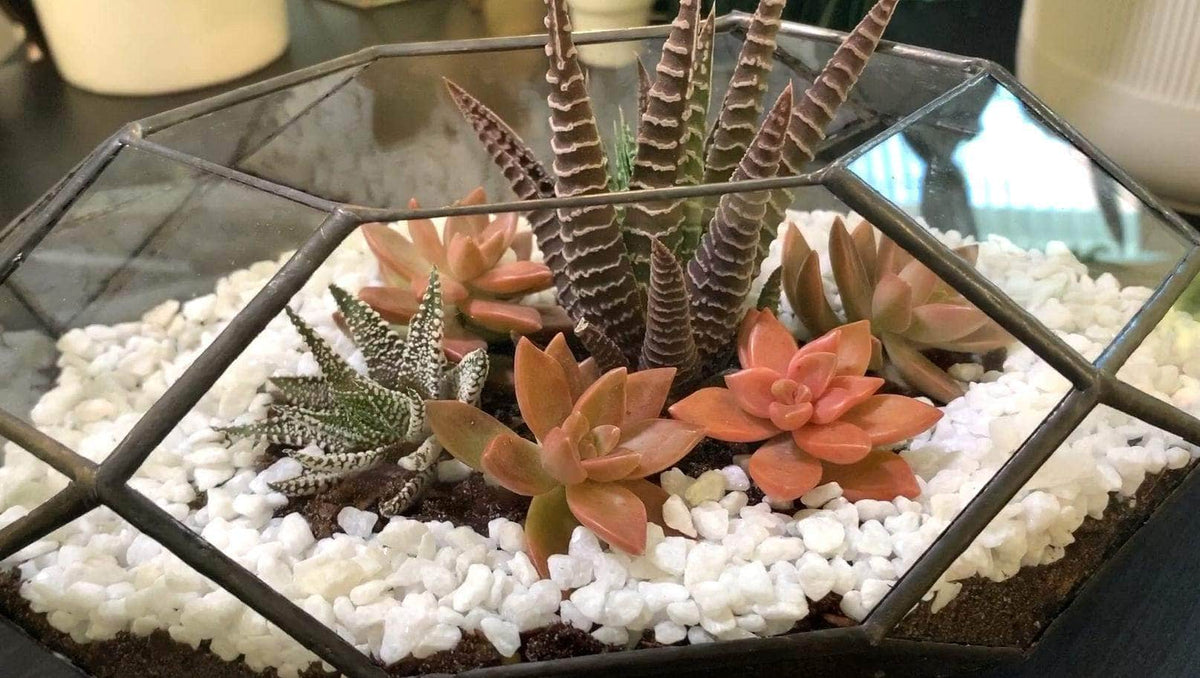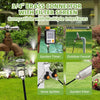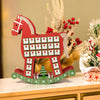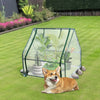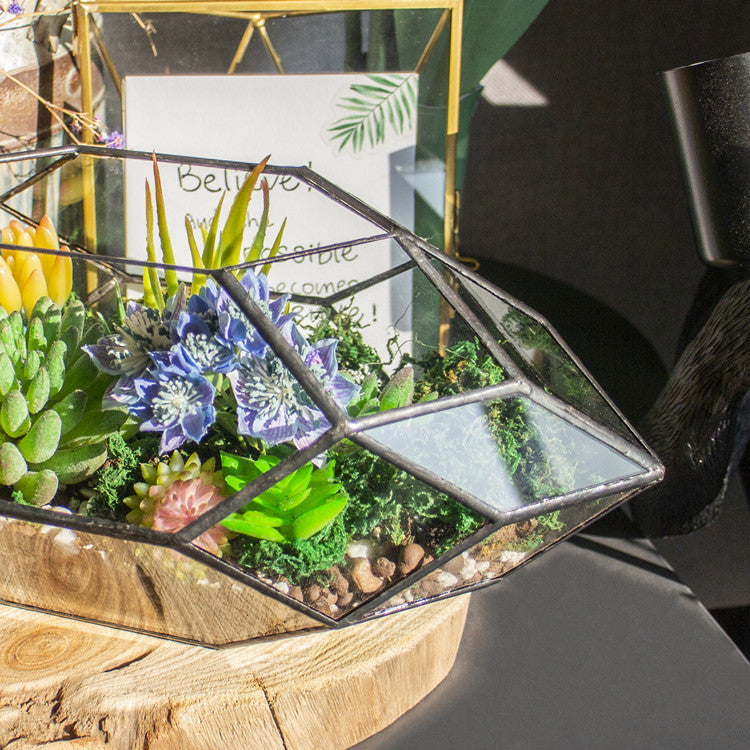
How To Make A Perfect Quality Glass Terrarium
Saying that glass terrarium makes the perfect décor for both indoor and outdoor use will definitely not sound like breaking news.
This, you will agree due to the fact that glass material gives a terrarium the crisp hue that allows your terrarium creatures and ornaments to embellish your space with an unimaginable look of magnificence.
Well, you may be a garden or some greenery freak who would want to have some beautiful and well-nurtured terrarium around a few corners in your home, but the price of acquiring a kit of such glass terrarium might pose a hindrance to your wishes.
If that’s you, then you aren’t alone on this. With this simple and inexpensive guide on how to make a perfect quality glass terrarium, you can create as much high-quality glass terrarium for yourself. And guess what, you don’t have to break the bank to do this.
And like you already know, once you’ve got your glass terrarium up and growing, all you need is keep watering the ecosystem without racking your head about maintenance.
But before we dive deep into the ‘how’, let’s take a few lines to see what you should consider before embarking on this adventurous journey of making your glass terrarium.
Tips for Making A Perfect Quality Glass Terrarium
As mentioned earlier, growing your own terrarium gives you the liberty to control the growing environment, as well as customizing your terrarium with some lovely landscaping and figurines.
So, before dashing into error, consider the following useful tips??
1. Decide what kind of container to use
In most cases, glass and plastic containers are the most common material you can use for a terrarium.
Although plastic materials seem to be lighter, they are prone to discoloration after a while. On the flip side, glass materials are relatively cheaper, widely available in different designs, shapes and they provide a crisp view of your terrarium ecosystem even after ages.
2. Add A touch of creativity to your choice of container
If you are trying so hard to save some bucks while trying to make you own glass terrarium, looking inward to some old and used coffee pot, pickle jar and even some cheap glass vase can make a perfect choice for your glass terrarium.
3. Will your terrarium be opened or closed?
Well, this isn’t totally up to you to decide, but your terrarium plant will decide what environment suits best for them.
However, when choosing your container, bear mind that open terrarium is very good for a sun-loving plant, which a closed terrarium will be the perfect choice for plants that thrive well in a highly humid environment.
4. The Right Soil is very important
Yes, terrariums are pretty easy to make and maintain but don't take this for granted by using just any type of soil for your terrarium.
For, the best result from your terrarium, purchasing packaged soil which is specifically meant to support a terrarium is the best, but if your budget can't accommodate this, regular potting soil which is highly rich in organic matter can suffice.
5. Add Activated Charcoal and Sand for Drainage
In order to get the best from your terrarium, as well as preventing your plant from rotting within just a few days, add at least 1-inch layer of crushed activated charcoal/sand mix to support your plant.
6. The Right plant is also important
Whether you are making a world-class terrarium for your home or just something very simple to give your home facelift, the choice of plants for your terrarium is almost endless.
However, your choice of a plant should complement the type of container you are using – open or closed containers. For plants such as cactus and succulents, your glass terrarium container has to be opened since these plants can thrive very well even with a low water supply.
Besides cactus and succulents, other plants you can consider for your glass terrarium include African violet, Mosses, Creeping Fig, Angel's Tears (Baby's Tears)
More so, these plants seem to be the best for terrarium due to their relatively slow growth rate, which helps to prevent overcrowding of plants within your terrarium
7. Be Subtle with Decorations
To add an icing of elegance and colour to your terrarium, you may wish to add a few figurines, shells, decorative rocks or plastic cake toppers to your glass terrarium. However, when doing this, be careful not to choke your plants with excessive ornaments.
8. Watering
Well, your glass terrarium doesn’t need to be waterlogged or bone dry, but you have to tread with care when watering your terrarium. On average, a light mist of water using a spray bottle will be okay for your terrarium.
If you have a closed terrarium, they almost never require water and make sure that you don’t expose it to direct sunlight that may cook up your plants.
On the flip side, if you have an open terrarium, you may only sprinkle some drops of water around your plants once a week, and before careful to avoid mosses and succulents which may not need much water to survive.
Great, you now have an idea of what your terrarium requires right from scratch to a full-blown ecosystem.
Now, let’s get to work, as I walk you through the simple steps you need to put your glass terrarium together and have it radiating bliss and beauty all around your space.
Step 1: Materials Needed For A Quality Glass Terrarium

Source: Ferrisland
Just like hitting the shopping mall with a shopping list, we need to list out all the materials we need in order to make this dream come true.
Well, materials needed for making a quality glass terrarium aren't hard to find since they can easily be sourced from a hardware store or a local nursery in your neighbourhood. To make a perfect quality glass terrarium, we shall need the following materials;
- Glass container that will house the terrarium. As mentioned in the tips above, you can recycle or repurpose a glass jar or bowl if purchasing a new glass might strain your pocket.
- Sand
- Ornamental minerals, shells, or stones
- Small plants well suited to the terrarium life
- Activated charcoal
- Air plant such as tillandsia, or any other bromeliad of your choice.
- Succulents, if you like. But note that it's not recommended to mix succulents and plants since both have a different water requirement
- Well-draining potting soil such as succulent and cactus soil can be a perfect choice for this
- Various mosses
- Small sticks or bark
- A strong string or hook to hang it if you aren’t placing it on a table
- Spray bottle or mister for daily watering
Step #2: Add The Sand or Pebbles Layer To The Glass Terrarium
Source: Ferrisland Youtube
At the rock bottom of your glass will be a thin layer of sand (about 1 inch) for drainage. However, where sand is not cool for you, pebbles can be a better alternative as they usually look a bit nicer to behold.
In order to make sure that you uneven lay the sand or pebbles at the bottom of the terrarium, you may have to use a funnel or scooper to send the sand down the glass container.
Step #3: Add The Activated Charcoal or Carbon Layer to the Terrarium
Source: Ferrisland Youtube
Right after the sand layer or pebbles, depending on your choice, the next layer that comes up is the activated carbon or charcoal – never mind, they are the same thing.
Before you cut in, the activated carbon or charcoal right after the soil layer should also be about an inch high just like you did for the soil layer, and they work pretty well to keep everything really fresh within your glass terrarium.
Never to worry, you can source the activated charcoal or carbon from your local water treatment shops.
Step #4: Add The Terrarium's Soil Layer
Source: Ferrisland Youtube
Next over the activated charcoal layer is another layer of well-draining soil, commonly referred to as the terrarium's soil. In order to achieve a better blend of soil that can support a wide variety of plants, you may consider mixing succulent soil with some potting soil.
You may consider using a paintbrush the spread the soil over the charcoal layer if your glass terrarium has a small opening, and make sure that you have an even layer of the terrarium’s soil over the activated carbon or charcoal.
Step #5: Add Larger Features to the Terrarium
Source: Ferrisland Youtube
Personally, I love including a succulent and a plant into the same terrarium – yes that’s weird, you may say, but it’s fine if you know your onions about planting both.
Since a plant and a succulent require different conditions for growth and survival, when having a succulent and a plant in the same terrarium, it is advisable to strategically place the plant at the lowest part of the terrarium where it can easily make contact with water to remain moist.
And for the succulent, you can place it a slight hill of soil where it will drain easily as well as remain close to the opening of the terrarium which will likely be dryer compared to the inside of the terrarium.
I'm sure it won't take too long for terrarium experts to correct my potentially fatal mistake, however, we really wanted to combine both plants and succulents in a single terrarium.
Also, to make it easy to position to your plants and succulent within the terrarium, I recommend that you fill your terrarium with the remaining sand after you've carefully placed your plants.
Well, you can dig a small hole to place your plant and succulent after filling the terrarium with the whole sand, but why I don't choose to do it this way is because it may be a bit hectic and difficult to place larger plants once the terrarium is already saturated with sand.
More so, since you will also be decorating your glass terrarium with a few ornamental kinds of stuff, it is wise that you leave some space within the terrarium so that you can comfortably place those little items without crowding or choking your terrarium.
Step #6: Add Other Small Features To Your Glass Terrarium
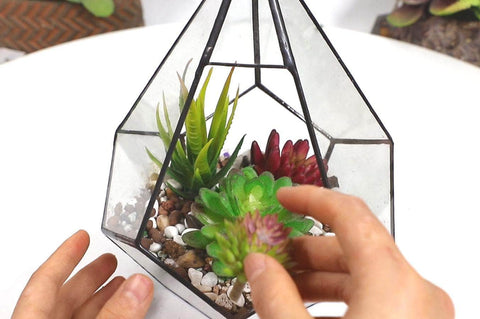
Source: Ferrisland
Use a pair of long tong or tweezers while adding a few dried pieces of tree bark or the air plant- Tillandsia to your glass terrarium. The air plant is really a perfect candidate for terrarium since it doesn’t need to be planted like another plant, but can simply be dropped on the terrarium and it will survive by extracting water and nutrients from the air.
Step #7: Add Other Terrarium Accessories

Source: Ferrisland Instagram
Top on the list of some accessories you may need for your glass terrarium maybe some hooks or strings for hanging your terrarium or some base support if you used a glass container that isn’t self-supporting.
Besides getting support for your terrarium, you may also want to express your creativity for decoration be lining the edge of your terrarium with some brightly coloured sea rocks, shells and other figurines.
However, when using some seashells, endeavour to wash them thoroughly to avoid leaching salt into your young ecosystem – this isn't good for your terrarium.
Step #8: Get Ready To Water and Nurture Your Terrarium
Source: Ferrisland Youtube
There is absolutely nothing to worry about since your terrarium requires just minimal attention. When it comes to watering your terrarium, this may not be a regular activity – maybe once or twice in a week depending on what your location and weather condition is.
For watering your terrarium, a mister spray bottle is enough to do the job better still, you can repurpose a used spray bottle for this since you only need a little water to spray down your air plant.
As mentioned earlier, a slight watering once or twice a week is okay. In case you observe a swampy smell or mold growth, it is an indication that you are probably overwatering your terrarium, and if the plant begins to wilt, then the reverse is the case.
Other forms of maintenance your terrarium may seek is just a strategic positioning where a moderate amount of sunlight can reach your glass terrarium greenery. And with that, you have a perfect quality glass terrarium to adorn your home or as a lovely gift to a loved one.
Bottom Line
Making your own glass terrarium requires just a few materials that wouldn’t get you breaking the bank to afford.
And once you are done making one for yourself, maintaining your glass terrarium is pretty easy with just an occasional watering once or twice in a week.



